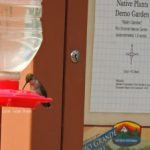Several weeks ago I went on a hunt for rare butterflies in South Jersey with my friend, Pat Sutton. As we bushwhacked through abandoned cranberry bogs in search of butterfly denizens of such locations, I began to notice that we were covered with ticks. Eeeew!
Confession time: I have to admit that as much as I love nature and wild beings, I really can’t find any love in my heart for ticks, especially when my pants and shirt are covered with them. Really, they totally skeeve me out. Once I see one, every little itch becomes magnified 100 times until I am imagining ticks crawling up my legs, ticks in my ears, ticks everywhere.
We stood by the side of the road flicking off the many ticks before getting back into the car. And once inside the car we picked off more ticks and tossed them out the window. Once back at Pat’s house, I picked off 16 more ticks, then after I returned home I nabbed 11 more while I was in the shower. I was really not a happy camper!
Apparently, I am not alone in thinking ticks were becoming more abundant. The New York Times published an article entitled “More ticks, more misery” where they point out that scientists are indeed stating that tick populations are increasing.
The item I found most interesting is that part of this increase is caused as we continue to chop woodlands up into smaller and smaller pieces. When we do this woodland predators, like owls who would normally control the mouse population, which is responsible for spreading Lyme disease, no longer have suitable habitat.
Fewer owls mean more mice, which means a greater chance of contracting Lyme disease. Once again, the consequences of habitat fragmentation has negative effects for wildlife, but is also having negative impacts on humans. Especially this human who really doesn’t like ticks!
Here are some general ideas on reducing the tick population in your wildlife garden:
1. Remove sources of standing water, such as old tires, buckets, etc.
2. Cut down grass and other vegetation regularly to reduce hiding places for ticks.
3. Encourage natural predators such as birds and lizards that eat ticks.
4. Install a barrier of gravel or wood chips between the lawn and the garden to keep ticks from entering.
5. Use tick-repellent plants such as lavender, chrysanthemums, and marigolds.








